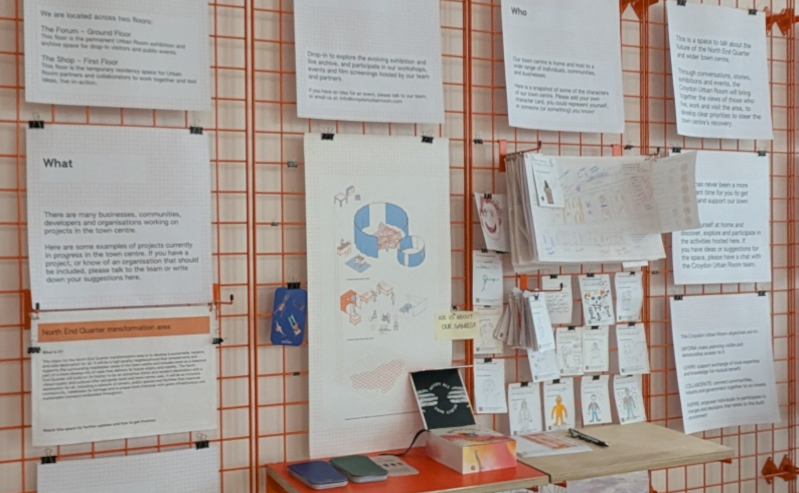
22 Jul How many reports does it take to revitalise a place?
As funding for places changes with major schemes ending in the past 12 months and the replacement for the UK Shared Prosperity Fund unknown, we have been thinking about how to achieve the best outcomes from projects for local authorities and practitioners.
What can commissioners and practitioners do to bring about change and provide a better return on public money?
In recent times, perhaps related to the flurry of high street funding schemes that arose over the past five years, it has felt that too many reports have been commissioned by local authorities only to be shelved or not taken forward.
The curse of the report can be down to timing. Funding for projects must often be spent within a set period, but local authorities are often under-resourced. This leads to tenders being issued late and tight deadlines.
Subsequently, the right people are not always engaged, and the money is spent in a hurry on the wrong type of project or activity.
Sometimes, commissioning a new piece of research is seen as a means of moving forward rather than reviewing and enacting existing recommendations.
Reports then end up ignored because they don’t say anything new, are too long or lack a clear action plan.
How practitioners and councils can work together to deliver for places
But, there are things that the private sector and public sector can do to effectively move projects from page to reality and avoid the cycle of endless reports. A strong, professional partnership is key in working together as trusted partners.
What practitioners can do
- If the brief is unclear on output formats and the approval process, document it at the start and agree on how it will work. Cabinet and committees, etc, have fixed dates and agendas as to when projects can be heard/seen by them.
- Agree with stakeholders on the scope for consultees/participants and have a clear engagement period. Without it, more people get added, engagement runs on, and it becomes challenging to bring findings to a conclusion.
- Establish whether the consultant(s) will work with the local authority to take it through internal approval, or will they do this themselves once a draft has been agreed. This influences the timeline and who is needed at different points of the project.
- Join the dots across existing reports and people and, if appropriate, suggest a different approach; don’t just plough on regardless with a weighty report nobody will read.
- Ensure there is a briefing note or short exec summary for those who just want the headlines as to what they should do next.
- Include a timeline and owners against actions, reviewing these with the client to ensure they are realistic
- Manage stakeholder expectations – if people give their time, ensure they know what will happen next and update them on delays if appropriate (or encourage the council too).
- It’s a tedious admin point, but projects are kept moving with efficient rescheduling of cancelled meetings. Best to reschedule at the time of cancellation rather than keep going back and forth.
What local authorities/project commissioners can do
- Devise priorities aligned to need and nature of available funding – a long list of options can be developed before funding is awarded; a ‘what-if’ list of what you would like to do if you were to win the funding.
- Stick to a timetable in line with the funding. Often, there are several months between local authorities being notified of funding allocations and a tender being issued, then just a three-month window to deliver the project.
- Review existing reports from the previous three years – do any of them already answer the brief for this next project? If they partly answer it, share the report(s) with practitioners (or those tendering) rather than have them repeat the work. If the brief has been answered already, in a previous report, does it need a refresh or sense check? If it’s good to go, what help do you need to take it from report to reality?
- Is a report the right output? Could the funding be spent on a workshop, on writing a bid for more funding or on forming a partnership board? What is the blocker in making things happen beyond money?
- Understand who the stakeholders are before the project is commissioned – how will their input influence the outcome?
- Update, update, and update again! People want to know what is happening when projects go quiet.
The Better Places Together Conference by Placed last month debated some of these themes in how social value and engagement is positioned when commissioning projects (report on their website here).
Final thoughts
In commissioning reports that aren’t really needed, public money is wasted. If practitioners are carrying on without challenging, there is an argument that they become complicit in this waste.
A report isn’t always necessary to start the conversation. Let’s have a collective think as to what other forms this might take.
At The Assembly Line, we want clear project outcomes and to have played a part in bringing people together to progress plans and ideas for a place.
We discuss things we have seen and lessons learnt in our monthly newsletter.
Sign up to The Assembly Line newsletter for urban and place shaping observations.

